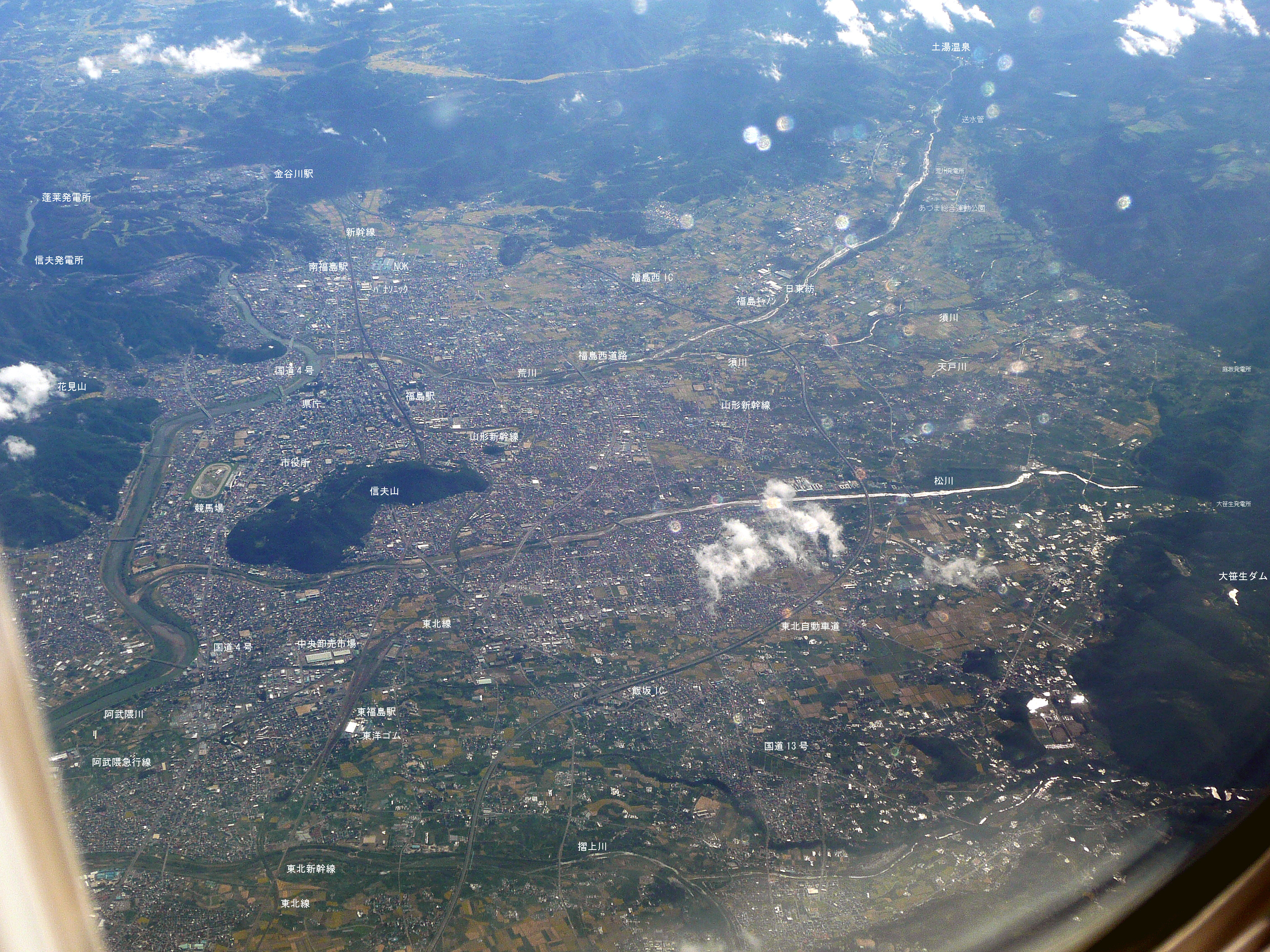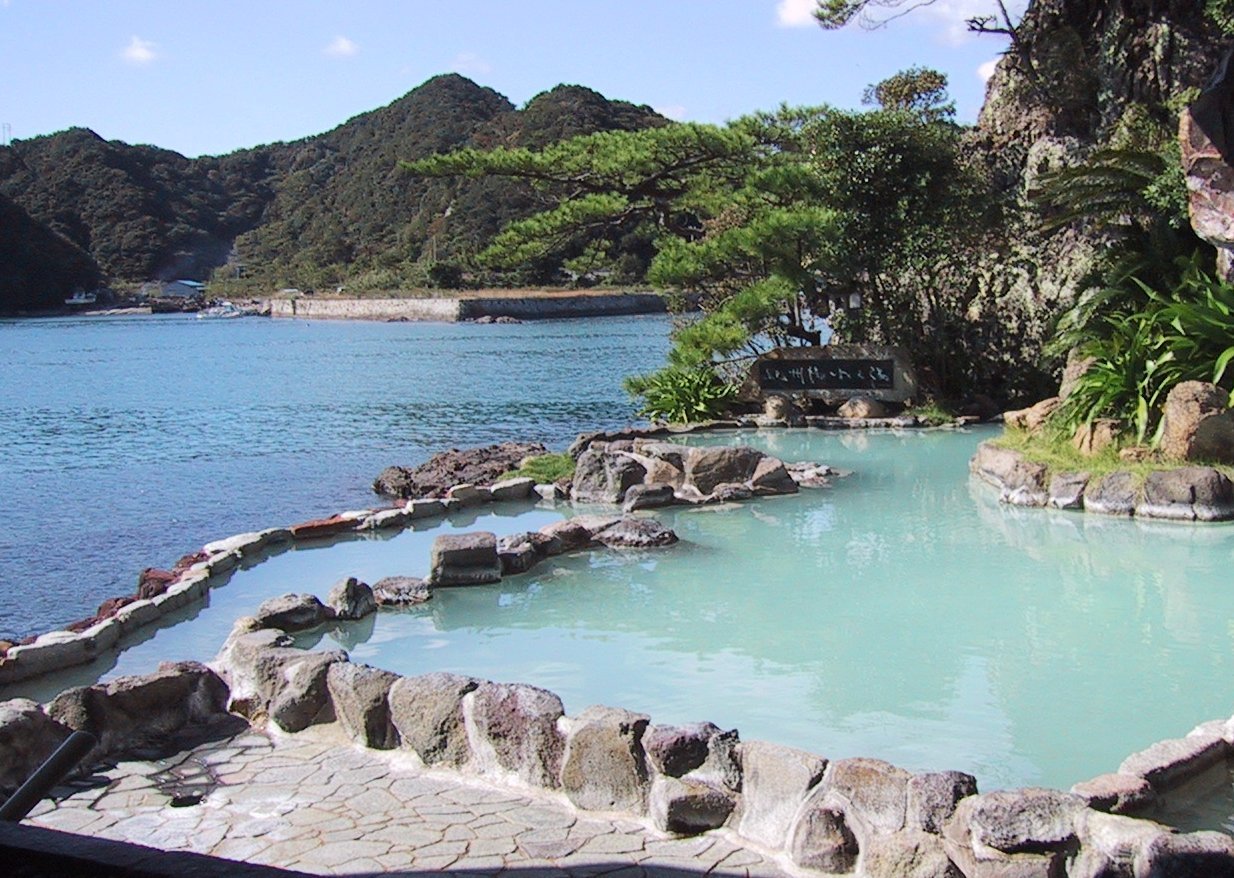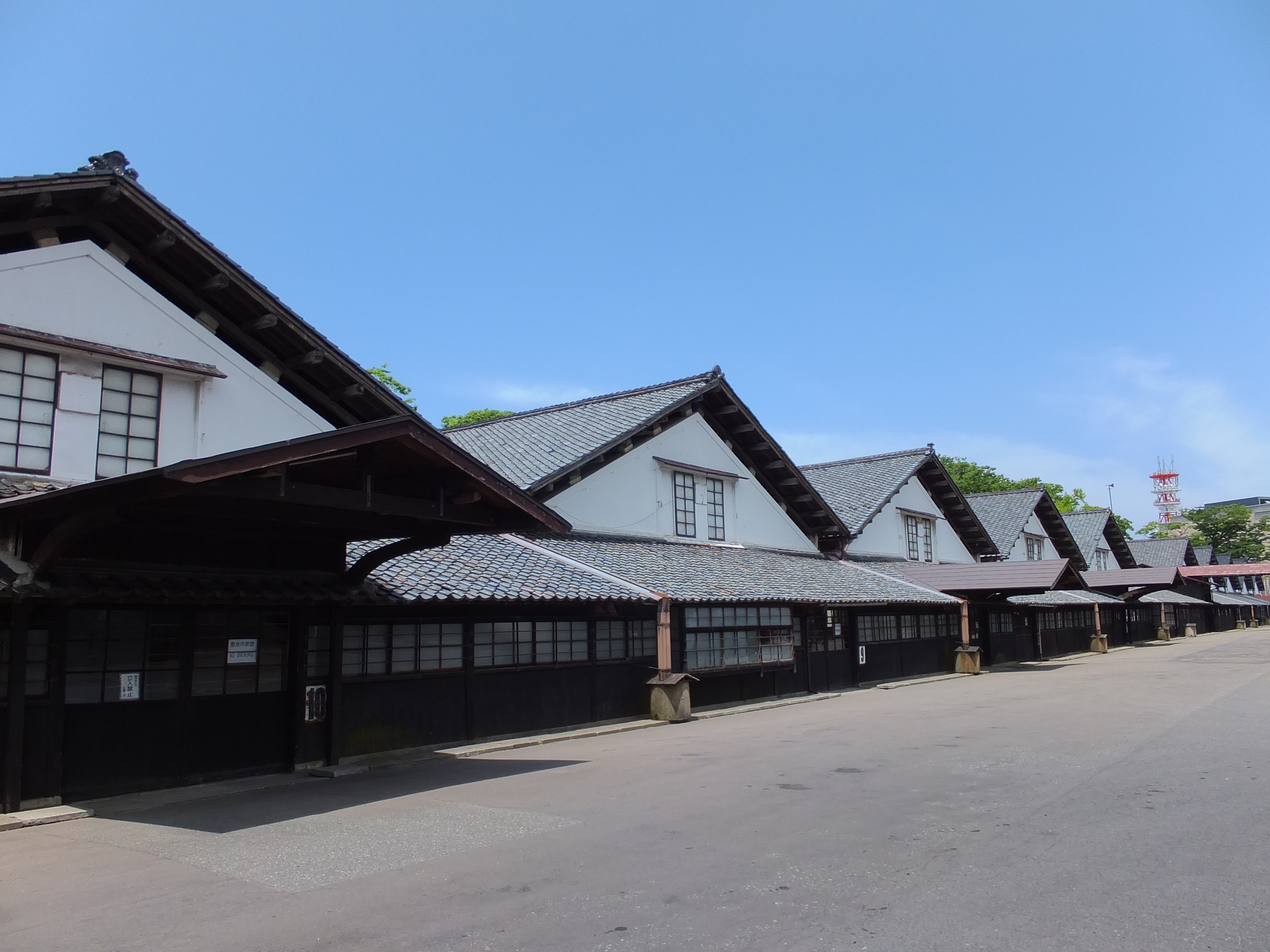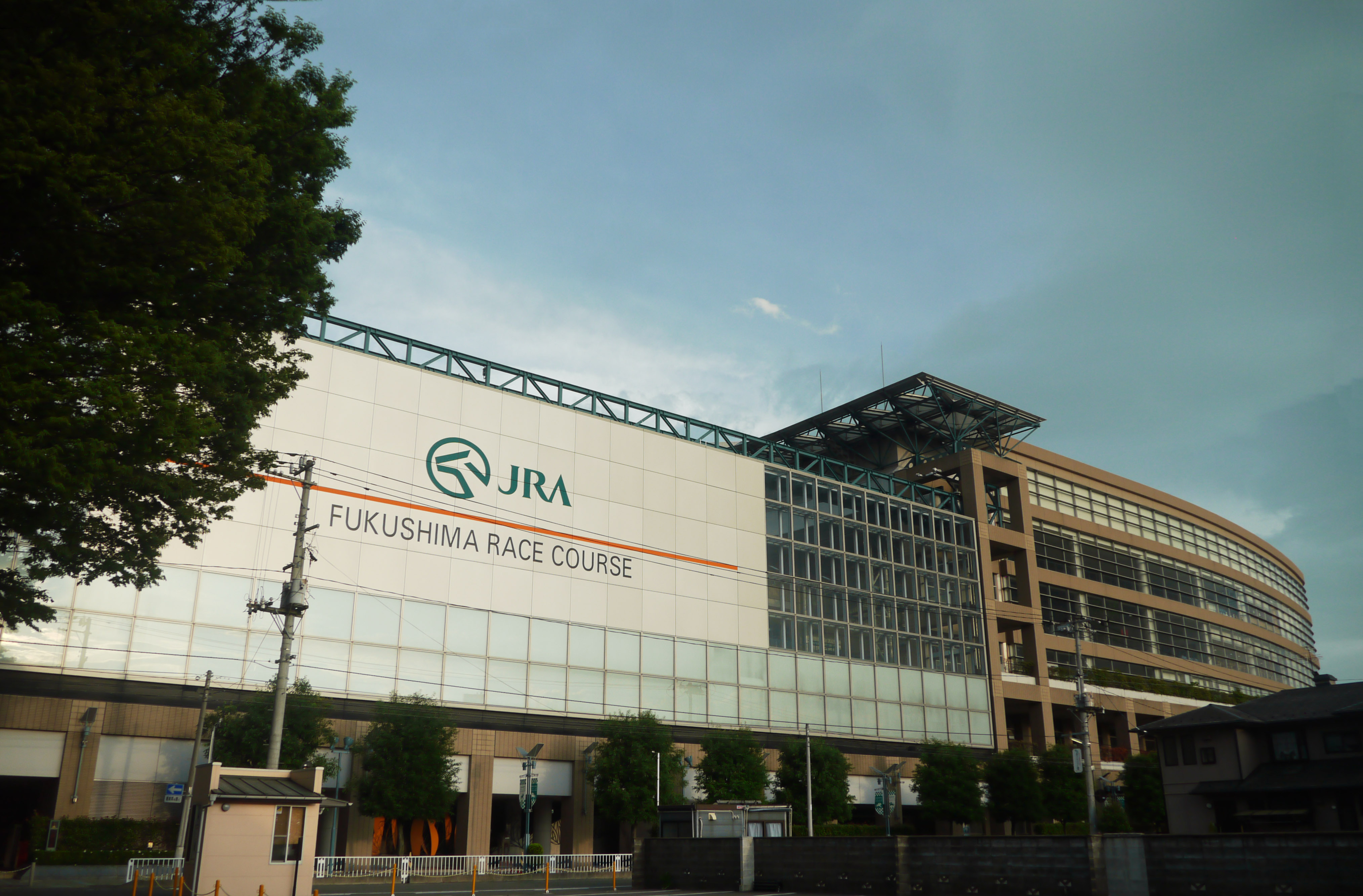|
Fukushima, Fukushima
is the capital city of Fukushima Prefecture, Japan. It is located in the northern part of the Nakadōri, central region of the prefecture. , the city has an estimated population of 283,742 in 122,130 households and a population density of . The total area of the city is . The present-day city of Fukushima partially consists of most of the former Shinobu and Date Districts and a portion of the former Adachi District. The city is located in the Fukushima Basin's southwest area and nearby mountains. There are many onsen on the outskirts of the city, including the resort areas of Iizaka Onsen, Takayu Onsen, and Tsuchiyu Onsen. Fukushima is also the location of the Fukushima Race Course, the only Japan Racing Association horse racing track in the Tōhoku region of Japan. Geography Fukushima is located in the central northeast section of Fukushima Prefecture, approximately east of Lake Inawashiro, north of Tokyo, and about south of Sendai. It lies between the Ōu Mount ... [...More Info...] [...Related Items...] OR: [Wikipedia] [Google] [Baidu] |
Core Cities Of Japan
A is a class or category of Japanese cities. It is a local administrative division created by the national government.Web-Japan.org "Local self-government," p. 3 retrieved 2012-11-28. Core cities are delegated many functions normally carried out by prefectural governments, but not as many as designated cities. To become a candidate for core city status, a city must have a population greater than 300,000 and an area greater than 100 square kilometers, although special exceptions may be made by order of the cabinet for cities with populations under 300,000 but over 200,000. After the abolition of special city status on April 1, 2015, any city with a population above 200,000 may apply for core city status. Application for designation is made by a city with the approval of both the city and prefectural assemblies. History The term "core city" was created by the first clause of Article 252, Section 22 of the Local Autonomy Law of Japan. List of core cities As of 1 April 2021, ... [...More Info...] [...Related Items...] OR: [Wikipedia] [Google] [Baidu] |
Onsen
In Japan, are the country's hot springs and the bathing facilities and traditional inns around them. As a volcanically active country, Japan has many onsens scattered throughout all of its major islands. There are approximately 25,000 hot spring sources throughout Japan that provide hot mineral water to about 3,000 genuine onsen establishments. Onsens come in many types and shapes, including and . Baths may be either publicly run by a municipality or privately, often as part of a hotel, ''ryokan'', or . The presence of an onsen is often indicated on signs and maps by the symbol ♨ or the kanji (''yu'', meaning "hot water"). Sometimes the simpler hiragana character ゆ (''yu''), understandable to younger children, is used. Traditionally, onsens were located outdoors, although many inns have now built indoor bathing facilities as well. Nowadays, as most households have their own bath, the number of traditional public baths has decreased, but the number of sightseeing ho ... [...More Info...] [...Related Items...] OR: [Wikipedia] [Google] [Baidu] |
Yamagata Prefecture
is a prefecture of Japan located in the Tōhoku region of Honshu. Yamagata Prefecture has a population of 1,079,950 (1 June 2019) and has a geographic area of 9,325 km² (3,600 sq mi). Yamagata Prefecture borders Akita Prefecture to the north, Miyagi Prefecture to the east, Fukushima Prefecture to the south, and Niigata Prefecture to the southwest. Yamagata is the capital and largest city of Yamagata Prefecture, with other major cities including Tsuruoka, Sakata, and Yonezawa. Yamagata Prefecture is located on Japan's western Sea of Japan coast and its borders with neighboring prefectures are formed by various mountain ranges, with 17% of its total land area being designated as Natural Parks. Yamagata Prefecture formed the southern half of the historic Dewa Province with Akita Prefecture and is home to the Three Mountains of Dewa, which includes the Haguro Five-story Pagoda, a recognised National Treasure of Japan. History The aboriginal people once inhabit ... [...More Info...] [...Related Items...] OR: [Wikipedia] [Google] [Baidu] |
Shichikashuku, Miyagi
is a town located in Katta District, Miyagi Prefecture, Japan. , the town had an estimated population of 1,323, and a population density of 5.0 persons per km² in 626 households. The total area of the town is . Geography Shichikashuku is located in the Tōhoku region of northern Japan in the far southwestern corner of Miyagi Prefecture. Surrounded by the Zaō Mountains, it is bordered by Yamagata Prefecture to the north and west, and by Fukushima Prefecture to the south. Parts of the town are within the borders of the Zaō Quasi-National Park or the Zaō Kōgen Prefectural Natural Park. Neighboring municipalities Miyagi Prefecture * Shiroishi * Zaō Yamagata Prefecture *Kaminoyama * Takahata Fukushima Prefecture *Fukushima Climate Shichikashuku has a humid climate (Köppen climate classification ''Cfa'') characterized by mild summers and cold winters. The average annual temperature in Shichikashuku is 9.6 °C. The average annual rainfall is 1430 mm with Septe ... [...More Info...] [...Related Items...] OR: [Wikipedia] [Google] [Baidu] |
Shiroishi, Miyagi
is a city in Miyagi Prefecture, Japan. , the city had an estimated population of 33,330 and a population density of 120 persons per km2 in 14,242 households. The total area of the city is . Geography Shiroishi is in southern Miyagi Prefecture, in the Tōhoku region of northern Japan, bordered by Fukushima Prefecture to the south. The southern peak of Mount Zaō is within the city borders. Neighboring municipalities Miyagi Prefecture * Kakuda * Shichikashuku * Zaō * Ōgawara *Marumori Fukushima Prefecture *Fukushima * Date * Kunimi *Koori Climate Shiroishi has a humid climate (Köppen climate classification ''Cfa'') characterized by mild summers and cold winters. The average annual temperature in Shiroishi is . The average annual rainfall is with September as the wettest month. The temperatures are highest on average in August, at around , and lowest in January, at around . Demographics Per Japanese census data, the population of Shiroishi peaked around the year 1990 and ... [...More Info...] [...Related Items...] OR: [Wikipedia] [Google] [Baidu] |
Miyagi Prefecture
is a prefecture of Japan located in the Tōhoku region of Honshu. Miyagi Prefecture has a population of 2,305,596 (1 June 2019) and has a geographic area of . Miyagi Prefecture borders Iwate Prefecture to the north, Akita Prefecture to the northwest, Yamagata Prefecture to the west, and Fukushima Prefecture to the south. Sendai is the capital and largest city of Miyagi Prefecture, and the largest city in the Tōhoku region, with other major cities including Ishinomaki, Ōsaki, and Tome. Miyagi Prefecture is located on Japan's eastern Pacific coast and bounded to the west by the Ōu Mountains, the longest mountain range in Japan, with 24% of its total land area being designated as Natural Parks. Miyagi Prefecture is home to Matsushima Islands, a group of islands ranked as one of the Three Views of Japan, near the town of Matsushima. On 7 April, 2011 the biggest earthquake in Japan occurred. History Miyagi Prefecture was formerly part of the province of Mutsu. 20 ... [...More Info...] [...Related Items...] OR: [Wikipedia] [Google] [Baidu] |
Abukuma Highlands
The or Abukuma Mountains is a highland area of Japan that extends from the southern part of Miyagi Prefecture to the eastern part of Fukushima Prefecture and then to the northern part of Ibaraki Prefecture is a prefecture of Japan located in the Kantō region of Honshu. Ibaraki Prefecture has a population of 2,871,199 (1 June 2019) and has a geographic area of . Ibaraki Prefecture borders Fukushima Prefecture to the north, Tochigi Prefectur .... Most of the highlands belong to Fukushima Prefecture. The highest peak in the highlands is (1,192m). References External links Abukuma Mountains- Britannica {{Authority control Mountain ranges of Miyagi Prefecture Mountain ranges of Fukushima Prefecture Mountain ranges of Japan ... [...More Info...] [...Related Items...] OR: [Wikipedia] [Google] [Baidu] |
Ōu Mountains
The are a mountain range in the Tōhoku region of Honshū, Japan. The range is the longest range in Japan and stretches south from the Natsudomari Peninsula of Aomori Prefecture to the Nasu volcanoes at the northern boundary of the Kantō region. Though long, the range is only about wide. The highest point in the range is Mount Iwate, . The range includes several widely known mountains: Hakkōda Mountains, Mount Iwate, Mount Zaō, Mount Azuma, Mount Yakeishi, and Mount Adatara. Naming These mountains previously formed the boundary between historical provinces of Mutsu (陸奥国) and Dewa (出羽国). The '' kanji'' for the name of the mountain range was created from one '' kanji'' of the two provinces, 奥 and 羽, respectively. Geology The Ōu Mountains began to form in the Pliocene. They sit over the middle of the inner arc of the Northeastern Japan Arc. This is the result of the Pacific Plate subducting under the Okhotsk Plate. A chain of Quaternary The ... [...More Info...] [...Related Items...] OR: [Wikipedia] [Google] [Baidu] |
Tokyo
Tokyo (; ja, 東京, , ), officially the Tokyo Metropolis ( ja, 東京都, label=none, ), is the capital and List of cities in Japan, largest city of Japan. Formerly known as Edo, its metropolitan area () is the most populous in the world, with an estimated 37.468 million residents ; the city proper has a population of 13.99 million people. Located at the head of Tokyo Bay, the prefecture forms part of the Kantō region on the central coast of Honshu, Japan's largest island. Tokyo serves as Economy of Japan, Japan's economic center and is the seat of both the Government of Japan, Japanese government and the Emperor of Japan. Originally a fishing village named Edo, the city became politically prominent in 1603, when it became the seat of the Tokugawa shogunate. By the mid-18th century, Edo was one of the most populous cities in the world with a population of over one million people. Following the Meiji Restoration of 1868, the imperial capital in Kyoto was mov ... [...More Info...] [...Related Items...] OR: [Wikipedia] [Google] [Baidu] |
Lake Inawashiro
is the fourth-largest lake in Japan, located in central Fukushima Prefecture, south of Mount Bandai. It is also known as the . The lake is located within the borders of Bandai-Asahi National Park. It is a surface area of , circumference of , depth of and is located at an altitude of . In winter swans migrate to the beaches of the lake and stay there until spring. History Lake Inawashiro was formed some 30–40,000 years ago when a tectonic depression was dammed by a major eruption and pyroclastic flow from Mount Bandai. The water is acidic with a pH value of approximately 5.0, and has a high degree of transparency. The water level was considerably less during the Jōmon period as numerous artifacts and ceramic fragments have been found offshore. The lake water is an important source for irrigation in the Aizu region of western Fukushima Prefecture. An irrigation canal was completed during the Edo period and another, the Asaka Canal, in 1882. A third canal completed in 1915 ... [...More Info...] [...Related Items...] OR: [Wikipedia] [Google] [Baidu] |
Japan Racing Association
The Japan Racing Association ( ja, 日本中央競馬会 Nippon Chūō Keiba Kai, or JRA) is a public company established to operate Chūō Keiba (中央競馬 Central horse racing) and to manage racecourses, betting facilities, and horse-training facilities. It was founded in 1954, according to the Horse Racing Law (競馬法 Keiba Hō) and the Japan Racing Association Law (日本中央競馬会法 Nippon Chūō Keiba Kai Hō) and is operated under the strict oversight of the Ministry of Agriculture, Forestry and Fisheries (Japan). Facilities * Racecourses (競馬場 Keiba Jō) - All racecourses have one oval dirt course inside and one or two turf courses outside. Some have also jump courses. Only three (Tokyo, Niigata and Chukyo) are left-handed (counter-clockwise) and the others are right-handed (clockwise). ** Tokyo Racecourse ( Fuchu, Tokyo) ** Nakayama Racecourse ( Funabashi, Chiba) ** Kyoto Racecourse ( Kyoto, Kyoto) ** Hanshin Racecourse ( Takarazuka, Hyogo) ** Sapp ... [...More Info...] [...Related Items...] OR: [Wikipedia] [Google] [Baidu] |
Fukushima Race Course
is a horse racing course located in Fukushima, Fukushima may refer to: Japan * Fukushima Prefecture, Japanese prefecture **Fukushima, Fukushima, capital city of Fukushima Prefecture, Japan *** Fukushima University, national university in Japan *** Fukushima Station (Fukushima) in Fukushima, Fukushim .... It was built in 1918. Courses Fukushima Racecourse has both a turf and a dirt course. The turf course measures 1600m. Races can be run on the "A Course" rail setting (on the hedge), the "B Course" setting (rail out 2 meters), or the "C Course" setting (rail out 4 meters). The dirt course measures 1444.6 meters. Notable races {{horseracing-venue-stub Horse racing venues in Japan Sports venues in Fukushima Prefecture Fukushima (city) Sports venues completed in 1918 1918 establishments in Japan ... [...More Info...] [...Related Items...] OR: [Wikipedia] [Google] [Baidu] |





